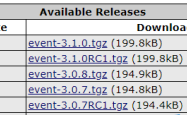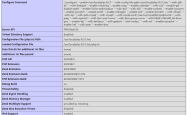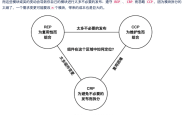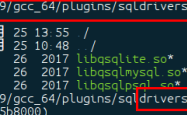Laravel5.1框架自带权限控制系统 ACL用法分析
本文实例讲述了Laravel5.1框架自带权限控制系统 ACL用法。分享给大家供大家参考,具体如下:
Laravel在5.1.11版本中加入了Authorization,可以让用户自定义权限,今天分享一种定义权限系统的方法。
1. 创建角色与权限表
使用命令行创建角色与权限表:
?| 1 | php artisan make:migration create_permissions_and_roles --create=permissions |
之后打开刚刚创建的文件,填入下面的代码:
?| 1 2 3 4 5 6 7 8 9 10 11 12 13 14 15 16 17 18 19 20 21 22 23 24 25 26 27 28 29 30 31 32 33 34 35 36 37 38 39 40 41 42 43 44 45 46 47 48 49 50 | public function up() { Schema::create( 'roles' , function (Blueprint $table ) { $table ->increments( 'id' ); $table ->string( 'name' ); $table ->string( 'label' ); $table ->string( 'description' )->nullable(); $table ->timestamps(); }); Schema::create( 'permissions' , function (Blueprint $table ) { $table ->increments( 'id' ); $table ->string( 'name' ); $table ->string( 'label' ); $table ->string( 'description' )->nullable(); $table ->timestamps(); }); Schema::create( 'permission_role' , function (Blueprint $table ) { $table ->integer( 'permission_id' )->unsigned(); $table ->integer( 'role_id' )->unsigned(); $table ->foreign( 'permission_id' ) ->references( 'id' ) ->on( 'permissions' ) ->onDelete( 'cascade' ); $table ->foreign( 'role_id' ) ->references( 'id' ) ->on( 'roles' ) ->onDelete( 'cascade' ); $table ->primary([ 'permission_id' , 'role_id' ]); }); Schema::create( 'role_user' , function (Blueprint $table ) { $table ->integer( 'user_id' )->unsigned(); $table ->integer( 'role_id' )->unsigned(); $table ->foreign( 'role_id' ) ->references( 'id' ) ->on( 'roles' ) ->onDelete( 'cascade' ); $table ->foreign( 'user_id' ) ->references( 'id' ) ->on( 'users' ) ->onDelete( 'cascade' ); $table ->primary([ 'role_id' , 'user_id' ]); }); } public function down() { Schema::drop( 'roles' ); Schema::drop( 'permissions' ); Schema::drop( 'permission_role' ); Schema::drop( 'role_user' ); } |
上面的代码会创建角色表、权限表、角色与权限的中间表以及角色与用户的中间表。
2. 创建模型
接下来使用命令行分别创建角色与权限模型:
?| 1 2 | php artisan make:model Permission php artisan make:model Role |
然后分别打开Permission.php、Role.php 以及 User.php ,加入下面的代码:
?| 1 2 3 4 5 | // Permissions.php public function roles() { return $this ->belongsToMany(Role:: class ); } |
| 1 2 3 4 5 6 7 8 9 10 | // Role.php public function permissions() { return $this ->belongsToMany(Permission:: class ); } //给角色添加权限 public function givePermissionTo( $permission ) { return $this ->permissions()->save( $permission ); } |
| 1 2 3 4 5 6 7 8 9 10 11 12 13 14 15 16 17 18 19 20 21 22 23 24 25 | // User.php public function roles() { return $this ->belongsToMany(Role:: class ); } // 判断用户是否具有某个角色 public function hasRole( $role ) { if ( is_string ( $role )) { return $this ->roles->contains( 'name' , $role ); } return !! $role ->intersect( $this ->roles)-> count (); } // 判断用户是否具有某权限 public function hasPermission( $permission ) { return $this ->hasRole( $permission ->roles); } // 给用户分配角色 public function assignRole( $role ) { return $this ->roles()->save( Role::whereName( $role )->firstOrFail() ); } |
上面的代码实现了给角色分配权限及给用户分配角色,然后还提供了判断用户是否具有某角色及某权限的方法。
之后就给使用Laravel提供的Authorization来定义权限控制了,打开 /app/Providers/AuthServiceProvider.php 文件,在 boot() 中添加代码:
?| 1 2 3 4 5 6 7 8 9 10 | public function boot(GateContract $gate ) { parent::registerPolicies( $gate ); $permissions = \App\Permission::with( 'roles' )->get(); foreach ( $permissions as $permission ) { $gate ->define( $permission ->name, function ( $user ) use ( $permission ) { return $user ->hasPermission( $permission ); }); } } |
通过上面的方法就定义好了各个权限。下面就该填充数据了。
3. 填充数据
为方便起见,这里使用 tinker 命令行工具来添加几条测试数据:
?| 1 | php artisan tinker |
之后进入命令行,依次输入下列命令:
?| 1 2 3 4 5 6 7 8 9 10 11 12 13 14 15 16 17 18 19 20 21 22 23 24 25 26 27 28 29 30 | // 改变命名空间位置,避免下面每次都要输入 App namespace App // 创建权限 $permission_edit = new Permission $permission_edit ->name = 'edit-post' $permission_edit ->label = 'Can edit post' $permission_edit ->save() $permission_delete = new Permission $permission_delete ->name = 'delete-post' $permission_delete ->label = 'Can delete post' $permission_delete ->save() // 创建角色 $role_editor = new Role $role_editor ->name = 'editor' ; $role_editor ->label = 'The editor of the site' ; $role_editor ->save() $role_editor ->givePermissionTo( $permission_edit ) $role_admin = new Role $role_admin ->name = 'admin' ; $role_admin ->label = 'The admin of the site' ; $role_admin ->save() // 给角色分配权限 $role_admin ->givePermissionTo( $permission_edit ) $role_admin ->givePermissionTo( $permission_delete ) // 创建用户 $editor = factory(User:: class )->create() // 给用户分配角色 $editor ->assignRole( $role_editor ->name) $admin = factory(User:: class )->create() $admin ->assignRole( $role_admin ->name) |
上面我们创建了两个权限:edit-post 和 delete-post,然后创建了 editor 和 admin 两个角色,editor 角色拥有 edit-post 的权限,而 admin 两个权限都有。之后生成了两个用户,分别给他们分配了 editor 和 admin 的角色,即:ID 1 用户拥有 editor 角色,因此只有 edit-post 权限,而 ID 2 用户拥有 admin 角色,因此具有 edit-post 和 delete-post 权限。下面我们来验证下是否正确。
打开 routes.php 文件:
?| 1 2 3 4 | Route::get( '/' , function () { $user = Auth::loginUsingId(1); return view( 'welcome' ); }) |
上面我们先验证 ID 1 用户的权限,然后修改 /resources/views/welcome.blade.php 文件:
?| 1 2 3 4 5 6 7 8 9 10 11 12 13 14 15 16 17 18 19 | <!DOCTYPE html> <html> <head> <title>Laravel</title> </head> <body> <h1>权限测试</h1> <p> @can( 'edit-post' ) <a href= "#" rel= "external nofollow" rel= "external nofollow" >Edit Post</a> @endcan </p> <p> @can( 'delete-post' ) <a href= "#" rel= "external nofollow" rel= "external nofollow" > Delete Post</a> @endcan </p> </body> </html> |
在视图中我们通过 Laravel 提供的 @can 方法来判断用户是否具有某权限。
打开浏览器,访问上面定义的路由,可以看到视图中只出现了 Edit Post 链接。之后我们修改路由中用户ID为 2 ,然后再次刷新浏览器,可以看到,这次同时出现了 Edit Post 和 Delete Post 两个链接,说明我们定义的权限控制起作用了。

希望本文所述对大家基于Laravel框架的PHP程序设计有所帮助。
原文链接:https://blog.csdn.net/luyaran/article/details/53539022
1.本站遵循行业规范,任何转载的稿件都会明确标注作者和来源;2.本站的原创文章,请转载时务必注明文章作者和来源,不尊重原创的行为我们将追究责任;3.作者投稿可能会经我们编辑修改或补充。










